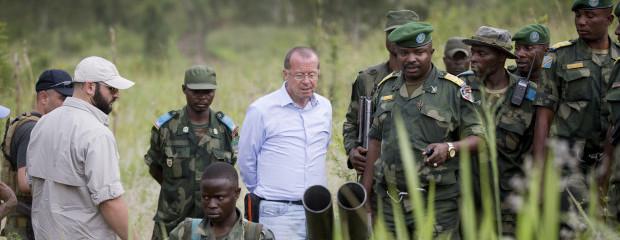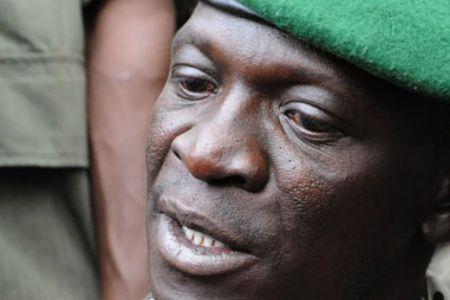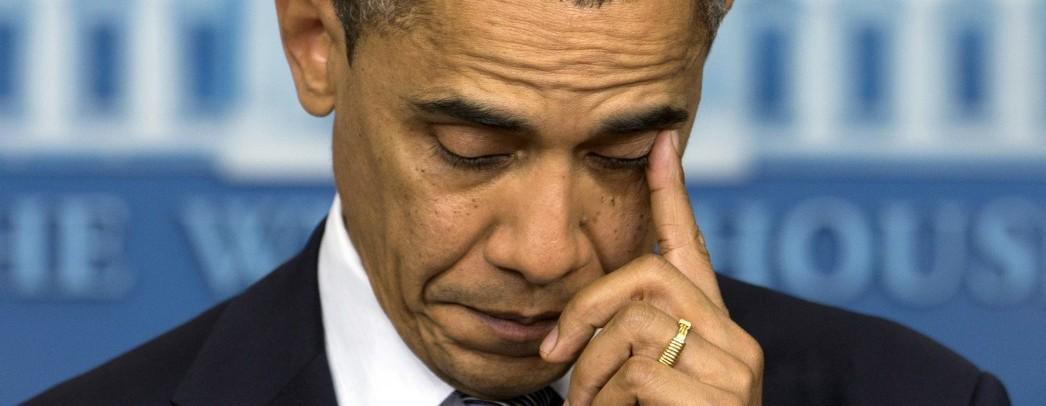DRC: Assessing the performance of MONUSCO’s Force Intervention Brigade – By Christoph Vogel
Roughly 16 months ago (in March 2013), the United Nations strengthened its peacekeeping mission in the Democratic Republic of the Congo (MONUSCO) with a more robust force to “neutralise armed groups”. This came as a response to a wave of criticism MONUSCO experienced for its passive stance during the capture of Goma by M23 troops. The so-called “˜Force Intervention Brigade’ (FIB) was set up with 3,069 troops from South Africa, Tanzania, and Malawi – all SADC member states. In a highly robust, mobile, and versatile manner, the FIB would start tackling various armed groups operating in eastern DRC, e.g. M23, FDLR, ADF and APCLS.
As with most UN peacekeeping efforts, the heavy bureaucracy linked to such interventions meant that the FIB did not become operational before July/August 2013. In the meantime, numerous concerns were voiced as to the potential side effects of this unprecedented move towards active peace enforcement in DRC and the concomitant transformation of (parts of) MONUSCO into an active belligerent. While the establishment of the FIB remains unique in the history of UN peacekeeping, the UN has been a belligerent and actively involving in fighting before, notably in DRC (ONUC in the 1960s in Katanga, and also parts of MONUC around 2004 in Ituri).
Led by Brigadier Mwakibolwa from Tanzania (now replaced after serving his term), and MONUSCO force commander Dos Santos Cruz, the FIB’s first engagement was the fight against M23. Between July and November, the FIB engaged by various means (artillery, aerial attacks, snipers etc.) alongside FARDC units that were leading the pushback against DRC’s then strongest armed group. The offensive led to an unexpectedly quick win on the side of FARDC/FIB. The primary reason for this was the use of well-trained and disciplined FARDC units (mostly Unités de Reaction Rapide) that benefitted from functioning supply chains for equipment, logistics, and food in conjunction with massive FIB support.
M23 also decided to engage in a “˜classic war,’ positioning itself as a proper army instead of engaging in guerrilla tactics. These aspects did not only help achieve a swift military victory on the side of the government/UN coalition, but also prevented major humanitarian consequences. Senior mission staff have, however, confirmed (off-the-record) that MONUSCO, at this time, had no serious contingency plans to react to massive displacement if it had occurred. Moreover, concerns over regional escalation have luckily not materialized – given that, among others, Tanzanian and South African forces fought against M23; who allegedly benefitted from Rwandan and Ugandan support (countries that lately traded diplomatic insults with FIB contributors.)
After M23’s disappearance from the eastern Congolese conflict landscape, the Allied Democratic Forces, an Islamist Ugandan armed opposition force sitting in Congolese territory, came into the focus of joint FARDC/FIB operations (Jan 2014). After six months of continuous military operations – this time with less combat-linked support by FIB – official and unofficial sources seem to agree that ADF’s operating bases have largely been conquered and/or destroyed (while the group’s état major appears to remain intact). Despite a massive increase in insecurity around Beni, humanitarian catastrophes did not occur – but MONUSCO as well as other UN and humanitarian actors have been increasingly targeted by unidentified attackers, possibly ADF.
A few months later, the FIB joined FARDC offensives against APCLS, a Masisi-based militia that emerged from parts of the former PARECO – the main opponent to M23’s predecessor, the CNDP. Not necessarily triggered by clashes between APCLS, FDC, Guides, and Nyatura in southwestern Masisi in February, but temporarily pursuant to these events, FARDC units started combatting APCLS (which used to serve as a FARDC proxy in anti-M23 operations before, alongside Nyatura and certain parts of FDLR).
Reportedly not engaged in ground operations, or at least not as significantly as those against M23, FIB provided massive support through aerial attacks against APCLS positions in Nyabiondo and Lukweti. With alliances and collaborations largely being unstable and shifting in eastern DRC, it turned out the FARDC offensive was significantly assisted by parts of the Nyatura militias – another product of ex-PARECO, whose relations with APCLS have been souring over the past years (for several reasons linked to Masisi’s complex and dynamic social and political makeup.)
The indirect collaboration with one negative force aimed at neutralising another puts the FIB’s, MONUSCO’s, and more generally, the UN’s impartiality in to question. The FARDC’s continued collaboration with various armed groups used as proxy forces against others, as well as its paradigmatic lack of unity and internal cohesion, lies at the basis of many problems. However, as a national army it can be argued that FARDC is not subject to impartiality. Nevertheless the need for proper army reform in the frame of larger SSR is vital.
Meanwhile, anti-FDLR operations remain at the stage of repeated announcements. The “˜longest-serving’, most resilient armed group on DRC territory still includes culprits of the Rwandan genocide serving at their highest level of command and genocidal ideology remains part and parcel of military and political education, even if most of their current fighters (i.e. certainly anyone under 30 years as well as Congolese recruits) are not among the 1994 perpetrators.
As early as of December 2013, MONUSCO has been announcing the start of anti-FDLR operations, at that time in Northern Masisi. A little later, this turned out to be a hoax, as MONUSCO’s operations on the road axis between Mweso and Pinga largely focused on securing the area and just accidentally happened to be in the vicinity of certain residual FDLR positions.
In May 2014, a second serious announcement was given in the context of a joint operation in Western Rutshuru territory, in Tongo. This operation failed due to the persistence of certain FARDC-FDLR networks at the local level, but also reluctance within the FIB. Ever since, it remains unclear if and when anti-FDLR operations will begin and, amid a highly mediatised FDLR demobilization wave in June, and renewed threats against the group from Luanda where a joint ICGLR-SADC summit ended in early July, it is hard to predict how the situation will develop.
While not prescribed by MONUSCO’s current mandate, the mission is clear on the fact that the FIB will not start unilateral operations without consent of the DRC government. This is understandable with regards to matters of sovereignty, but prevents action – since President Kabila is yet to give green light for anti-FDLR operations. Kabila himself is not necessarily for or against such operations, but amongst DRC elites (politically and militarily) the FDLR question is highly controversial. While some favour military action, others reject it on the basis of previous relations and collaboration against common adversaries, and a third group puts forward the claim that as the DRC was drawn into negotiations with M23, Rwanda should also negotiate with the FDLR.
Kigali (for obvious reasons) refuses the latter, but it’s not only DRC politics that is preventing action. Within the FIB, similar political thinking is at play. Various stakeholders have independently confirmed that as of now Tanzanian and South African troops do not have clearance to engage in fighting with the FDLR – leaving the Malawian battalion as the only force that could engage. This coincides with afore-mentioned diplomatic tensions and the increasing role of SADC as a regional body in eastern DRC’s affairs – an area covered by the ICGLR, another regional body that has remained largely ineffective throughout.
Overall, the FIB’s performance has been a mixed bag. So far it has not lived up to earlier fears in terms of humanitarian impact, but has contributed to the perception that MONUSCO and UN are becoming increasingly belligerent. In regards to M23 and ADF operations, the military performance of the FIB, or its support to these campaigns, must be assessed positively in most aspects (there are plenty of negative side effects, suffice to think of numerous unsolved problems after the so-called M23-DRC peace agreement, but these cannot be attributed to FIB).
The on-going APCLS operations hold greater dangers than the benefits the can conceivable create. The FIB’s engagement in these operations is likely to undermine MONUSCO’s position in Masisi and appears to be a political misstep given the volatility and instability in that area. A serious backlash is to be expected if MONUSCO continues to jeopardise its impartiality in this context.
Last, the FIB will also be judged by its performance as regards the FDLR . Here though, MONUSCO itself and the FIB are not to be blamed because (as so often) the real problems are located at the level of the DRC government, regional diplomacy, and high-level politics at the UN Security Council and troop-contributing countries.
Christoph Vogel is a PhD researcher at University of Zurich. He blogs at www.christophvogel.net and tweets at www.twitter.com/ethuin.







